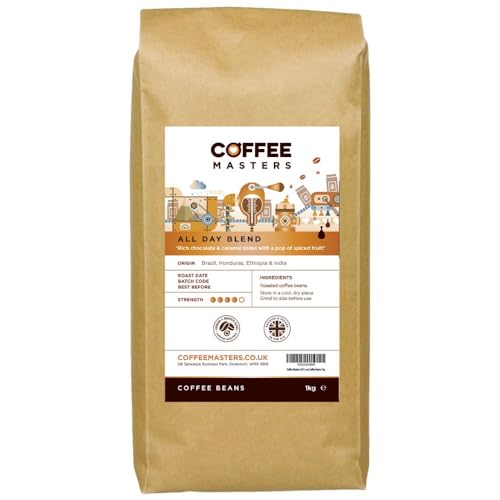A Trip Back In Time A Trip Back In Time: What People Talked About Which Coffee Beans Are The Best 20 Years Ago

Which Coffee Beans Are the Best?
The type of beans you choose can make an enormous difference when it comes to creating a delicious cup. Each kind has its own distinct flavor that is perfect for many drinks and food recipes.
Panama is the leading country with its rare Geisha beans. These beans are highly assessed in cupping tests and are also costly at auction. But Ethiopia especially Yirgacheffe beans is close behind.
1. Geisha Beans from Panama
If you're looking to find the top coffee beans available Look at Geisha beans from Panama. Geisha beans are highly sought-after due to their unique aroma and flavor. These rare beans, harvested at high altitudes undergo an exclusive process that gives them their signature flavor. The result is a cup with a smooth, rich flavor.
Geisha coffee is native to Ethiopia but was introduced into Panama for the first time in 1963. Geisha coffee has been proven to win competitions with its distinctive taste and flavor. Geisha beans are also expensive due to the labor required to grow them. Geisha coffee plants are more difficult to grow because they require higher elevations as well as special climate conditions.
Geisha beans are also very delicate and should be handled with care. They must be carefully sorted and meticulously prepared prior to roasting. Otherwise, they can become bitter and acidic.
The beans are grown at the Janson Coffee Farm, which is located in Volcan, Panama. The farm is dedicated to protecting the environment and specializes in high-quality production. They use solar panels to generate energy and recycle waste water and materials, and utilize enzyme microbes to improve soil. They also plant trees and utilize recycled water to wash. The coffee they make is a Washed Geisha and was awarded the highest score in a Panama Coffee Competition.
2. Ethiopian Coffee
Ethiopia is a major coffee producer that has a long record of producing some of the most exquisite brews. They rank 5th in the number of coffee producer in the world. their beans are highly sought-after for their unique floral and fruity flavor profiles. Differently from other beans, Ethiopians taste their best when they are roasted to a medium roast. This allows the delicate floral notes to stay while also accentuating their citrus and fruity flavors.
Sidamo beans, which are known for their crisp acidity and crisp acidity, are among the top in the world. However, other coffees, such as Yirgacheffe or Harar are equally well-respected. Harar is among the most well-known and oldest varieties of Ethiopian coffee and has distinctive wine and mocha flavor profile. Coffees from the Guji region are also known for having complex flavors and distinct terroir.
Another type of coffee from Ethiopia is called natural process, and it is processed using dry processing instead of wet-processing. The main difference between these two methods is that wet-processing involves washing the coffee beans, which can eliminate some sweetness and fruity taste from the beans. Natural process Ethiopian coffees weren't as popular than their washed counterparts. They were used more to enhance blends than they were those sold on the specialty market. However, recent technological advances have made it possible to get more natural Ethiopians.

3. Brazilian Coffee
Brazilian Coffee is a rich blend of different kinds. It is characterized by low acidity and a silky body. It has a sweet taste with some cocoa. The flavor is different based on the location and state it is grown. It is also known for its citrus and nutty notes. It is a good choice for those who enjoy medium-bodied coffee.
Brazil is the world's biggest exporter and producer of coffee. Brazil produces more than 30 percent of the world's total coffee beans. It is a significant agricultural industry and Brazil's economy depends heavily on it. Brazil has a climate ideal for coffee production, and 14 major coffee-producing regions.
coffee beans online that are used in Brazilian coffee are Catuai, Mundo Novo, Obata, and Icatu. All of these are varieties of Arabica. There are a variety of hybrids that include Robusta. Robusta is one type of coffee bean that originated in Sub-Saharan Africa. It is not as flavorful as Arabica coffee, however, it is easier to grow and harvest.
It is important to keep in mind that slavery exists in the coffee industry. Slaves are being subjected in Brazil to long and exhausting working hours, and could be denied adequate housing. The government has taken steps to tackle this issue through programs that help coffee growers pay their debts.
4. Indonesian Coffee
The best Indonesian coffee beans are known for their dark, earthy flavor. The volcanic ash in the soil creates a earthy flavor and a robust body. They are ideal to blend with beans from Central America or East Africa that have higher acidity. They also respond well to darker roasting. Indonesian coffees have a rich and rustic taste profile and often have tasting notes of leather, tobacco wood, ripe berries, and spice.
Java and Sumatra are the two major coffee producing regions in Indonesia, although there is also some coffee on Sulawesi and Bali. A lot of farms in this region use a wet-hulling procedure. This differs from the washed method common in many parts of the world. The coffee cherries are de-pulped, then washed and dried. The hulling decreases the amount water in the coffee, which can limit the effect of rain on the final product.
Mandheling is one of the most well-known and high-quality varieties of Indonesia. It comes from Toraja. It is a full-bodied, robust coffee with hints of candied fruits and intense chocolate flavors. Gayo and Lintong are also types of coffee that come from this region. They are often wet hulled and have a full-bodied and smokey flavor.
